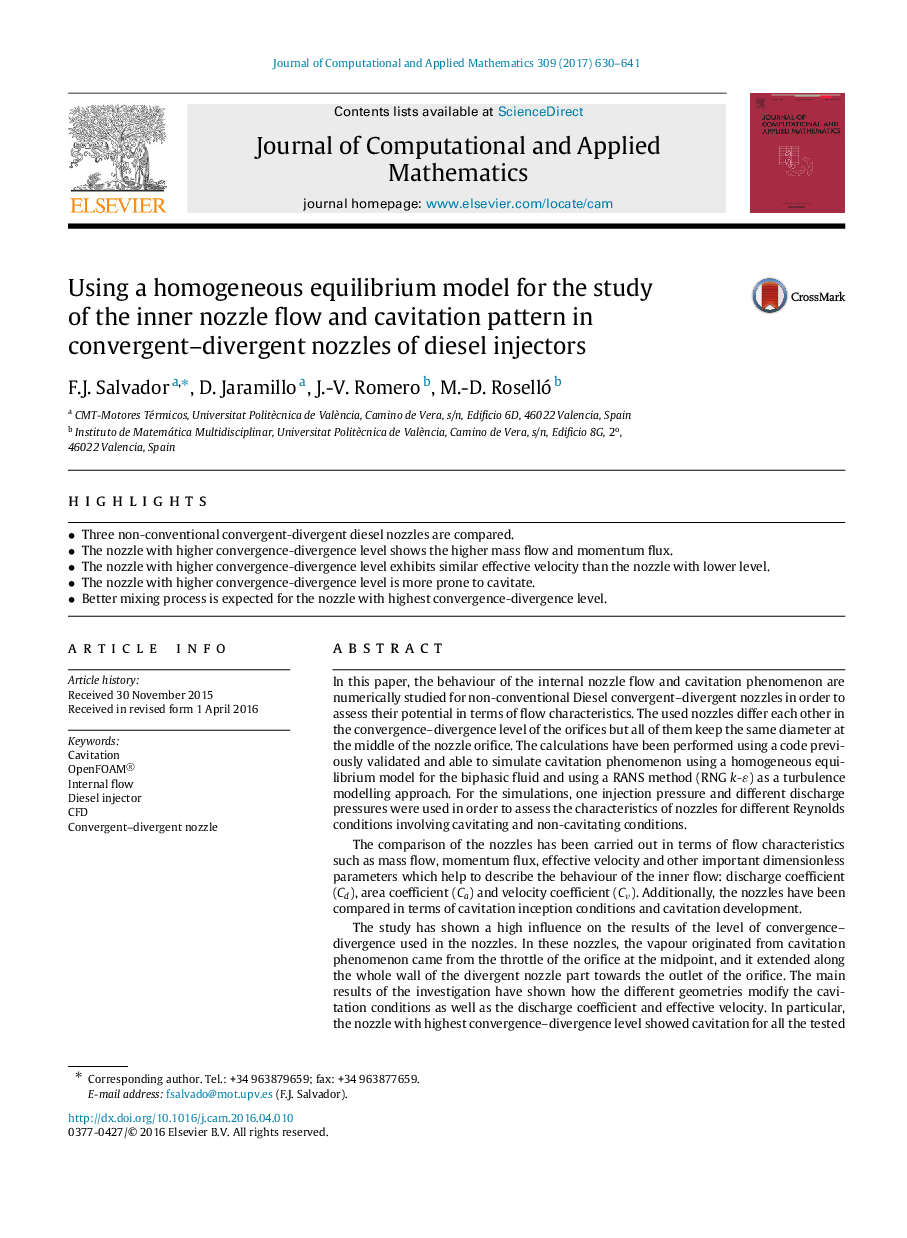| کد مقاله | کد نشریه | سال انتشار | مقاله انگلیسی | نسخه تمام متن |
|---|---|---|---|---|
| 4637839 | 1631982 | 2017 | 12 صفحه PDF | دانلود رایگان |
• Three non-conventional convergent-divergent diesel nozzles are compared.
• The nozzle with higher convergence-divergence level shows the higher mass flow and momentum flux.
• The nozzle with higher convergence-divergence level exhibits similar effective velocity than the nozzle with lower level.
• The nozzle with higher convergence-divergence level is more prone to cavitate.
• Better mixing process is expected for the nozzle with highest convergence-divergence level.
In this paper, the behaviour of the internal nozzle flow and cavitation phenomenon are numerically studied for non-conventional Diesel convergent–divergent nozzles in order to assess their potential in terms of flow characteristics. The used nozzles differ each other in the convergence–divergence level of the orifices but all of them keep the same diameter at the middle of the nozzle orifice. The calculations have been performed using a code previously validated and able to simulate cavitation phenomenon using a homogeneous equilibrium model for the biphasic fluid and using a RANS method (RNG kk-εε) as a turbulence modelling approach. For the simulations, one injection pressure and different discharge pressures were used in order to assess the characteristics of nozzles for different Reynolds conditions involving cavitating and non-cavitating conditions.The comparison of the nozzles has been carried out in terms of flow characteristics such as mass flow, momentum flux, effective velocity and other important dimensionless parameters which help to describe the behaviour of the inner flow: discharge coefficient (CdCd), area coefficient (CaCa) and velocity coefficient (CvCv). Additionally, the nozzles have been compared in terms of cavitation inception conditions and cavitation development.The study has shown a high influence on the results of the level of convergence–divergence used in the nozzles. In these nozzles, the vapour originated from cavitation phenomenon came from the throttle of the orifice at the midpoint, and it extended along the whole wall of the divergent nozzle part towards the outlet of the orifice. The main results of the investigation have shown how the different geometries modify the cavitation conditions as well as the discharge coefficient and effective velocity. In particular, the nozzle with highest convergence–divergence level showed cavitation for all the tested conditions while for the nozzle with lowest convergence–divergence level, the cavitation phenomenon could be avoided for high discharge pressures. Additionally, the nozzle with highest convergence–divergence level showed the lowest discharge coefficient values but similar effective injection velocity than the nozzle with lowest level of convergence–divergence level despite of its higher orifice outlet area.
Journal: Journal of Computational and Applied Mathematics - Volume 309, 1 January 2017, Pages 630–641
